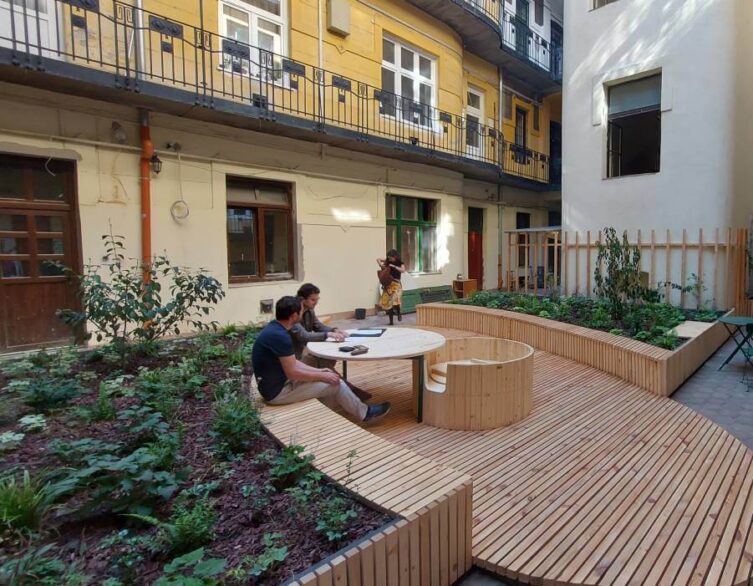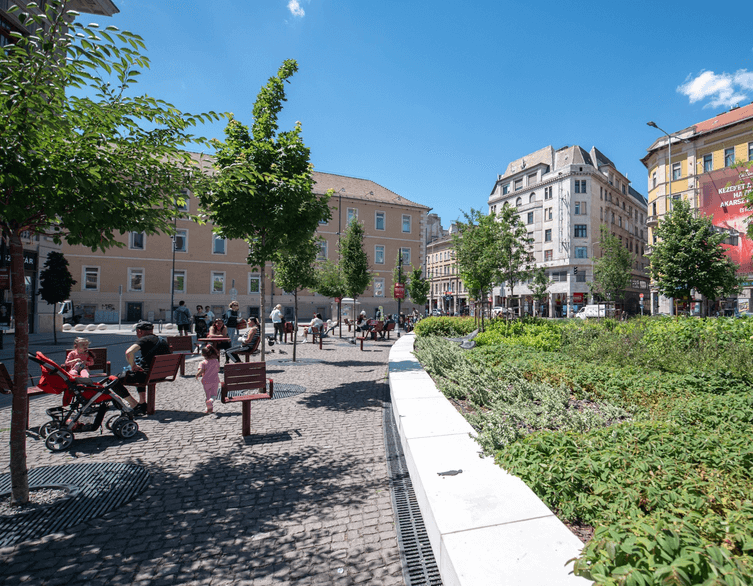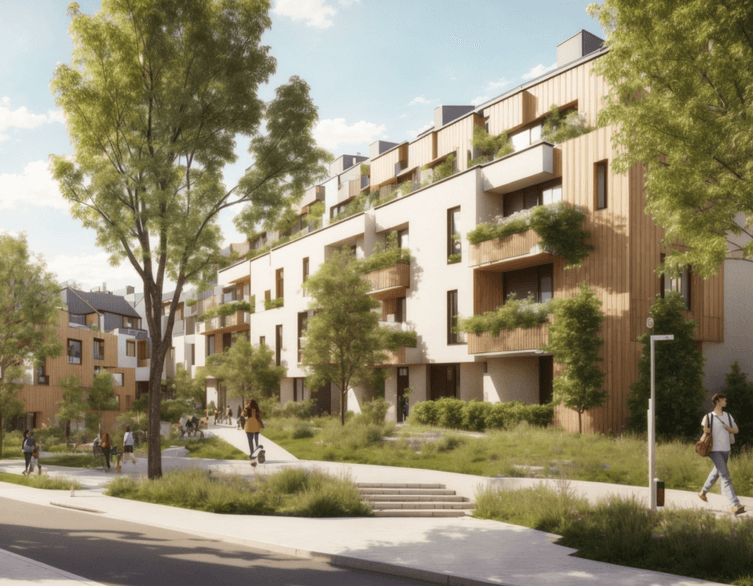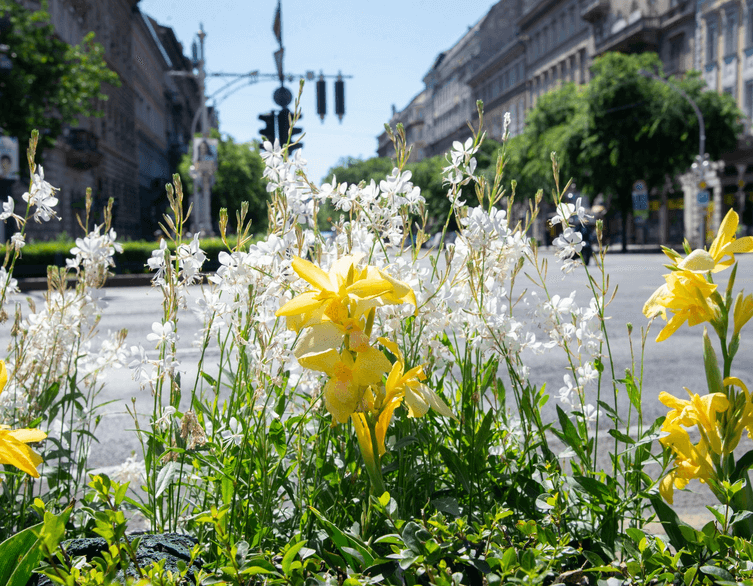Climate Strategy to Combat Increasing Heat Waves in Budapest

Budapest, the capital city of Hungary, is facing a growing challenge from the impacts of climate change. The city’s dense urban fabric, geographical location, and the global warming trend are contributing to more frequent and intense heat waves during the summer months. To address this critical issue, a comprehensive climate strategy is being developed to mitigate the urban heat island effect and improve the quality of life for Budapest’s residents.
The Challenges Ahead Projections and Impacts
According to climate projections, Budapest is expected to experience a significant increase in average summer temperatures in the coming decades. By 2071, the maximum temperature in the city could rise by up to 13°C compared to current levels. By 2100, summers in Budapest are predicted to be as hot as those in Morocco during the 1990s. This warming trend is further exacerbated by the urban heat island effect, which can add an additional 3-5°C to the global temperature increase in the city.
The consequences of these rising temperatures are far-reaching. More frequent and severe heat waves will make the city center increasingly unbearable, leading to a deterioration in the quality of life for residents. This, in turn, may accelerate the trend of people moving to the suburbs, putting additional strain on infrastructure and the environment. It is a vicious cycle that requires urgent action.
Limitations of Traditional Greening Strategies
Green spaces, such as parks, gardens, and tree-lined streets, have long been considered a primary solution to combat urban heat. While these spaces provide numerous benefits, including oxygen production, dust retention, and a cooling effect through evapotranspiration, their potential in Budapest’s densely built city center is limited.
Lilla Lapinskas, a researcher from ETH Zurich, argues that an exclusively green strategy will not be sufficient to address the climate crisis in Budapest. The city’s compact urban fabric, particularly on the Pest side, restricts the possibilities for creating new green spaces, green facades, or green roofs on a large scale. Moreover, the presence of underground utilities often hinders the planting of new trees along sidewalks.
While the greening of inner courtyards in Budapest’s historic apartment buildings can have a localized cooling effect, as demonstrated by the successful “Grass Reaching the Sky” courtyard greening program, these initiatives must be combined with other measures to have a significant impact on the city’s overall climate.
Harnessing the Power of Wind
The Role of Urban Ventilation A closer examination of Budapest’s heat maps reveals that the Danube River has a strong cooling influence on the city center. This effect is further enhanced by the open space above the water body and the accelerated wind flow. However, the cooling effect diminishes where the street network breaks, as the wind becomes blocked.
Urban wind and ventilation corridors play a crucial role in the city’s climate. They facilitate enhanced evaporative cooling, contribute to air temperature reduction, strengthen the dispersal of cooler air from water and green surfaces, and reduce air pollution. Importantly, wind not only lowers the actual temperature but also significantly decreases the perceived temperature.
Budapest’s urban ventilation is particularly poor due to the city’s dense built environment, narrow streets, and relatively uniform building heights. The city’s ring-radial structure and the frequent interruption of street continuity further hinder air circulation. Simulations show that in the dense urban fabric of the city center, wind speeds are drastically reduced, with air flowing mostly above the rooftops without entering the street canyons (the “skimming flow” effect).
Best deals of Budapest
A Breakthrough Solution: Opening the Gates
A seemingly simple idea has the potential to overcome the stifling heat in Budapest’s central urban jungle. The concept involves partially or periodically opening the closed gates of inner courtyards or replacing them with permeable structures. By doing so, a pressure difference is created, leading to stronger air circulation between the layer of air just above the roofs, the courtyard, and the street.
Simulations demonstrate that opening the gates would create a wind system that could ventilate the entire city. The courtyards would act as cool ventilated evaporation points within the urban fabric, transforming the city into an interconnected, breathable, and evaporative network.
Implementing this strategy is relatively straightforward, as it can be applied almost universally in the homogeneous urban fabric of the city center. The costs are minimal compared to other interventions. Moreover, it would not be a drastic change, as open courtyards were common in the 19th-century cityscape.
Enhancing the Effect
To further enhance the cooling effect, the largely vacant basements of apartment buildings could be used for rainwater retention in water tanks. The introduction of courtyard pools would increase evaporative cooling. The combination of open gateways, courtyards, and water features would create a network of cool, ventilated buffer zones throughout the city.
Proving the Concept
The effectiveness of this strategy needs to be validated through real-world testing. It is crucial to determine whether the impact is not only measurable with instruments but also perceptible to residents. Pilot projects in selected neighborhoods could provide valuable insights and help refine the approach.
Conclusion
As Budapest faces the increasing challenges posed by climate change and urban heat waves, innovative solutions are needed to ensure the city remains livable and resilient. The proposed climate strategy, centered around harnessing the power of wind and creating a network of cool, ventilated courtyards, offers a promising path forward.
By opening the gates of inner courtyards and promoting urban ventilation, the city can tap into its existing architectural fabric to mitigate the urban heat island effect. This approach, combined with targeted greening initiatives and water retention measures, has the potential to transform Budapest into a more comfortable and sustainable metropolis.
However, the success of this strategy relies on a collaborative effort involving city authorities, building owners, and residents. Pilot projects, public awareness campaigns, and supportive policies will be essential to drive the widespread adoption of these measures.
As we look to the future, it is clear that adapting to the realities of climate change will require creativity, innovation, and a willingness to challenge conventional approaches. The climate strategy outlined in this article represents a bold step in that direction, offering hope for a cooler, greener, and more resilient Budapest.
Image source: Budapest City Hall
Related news
























